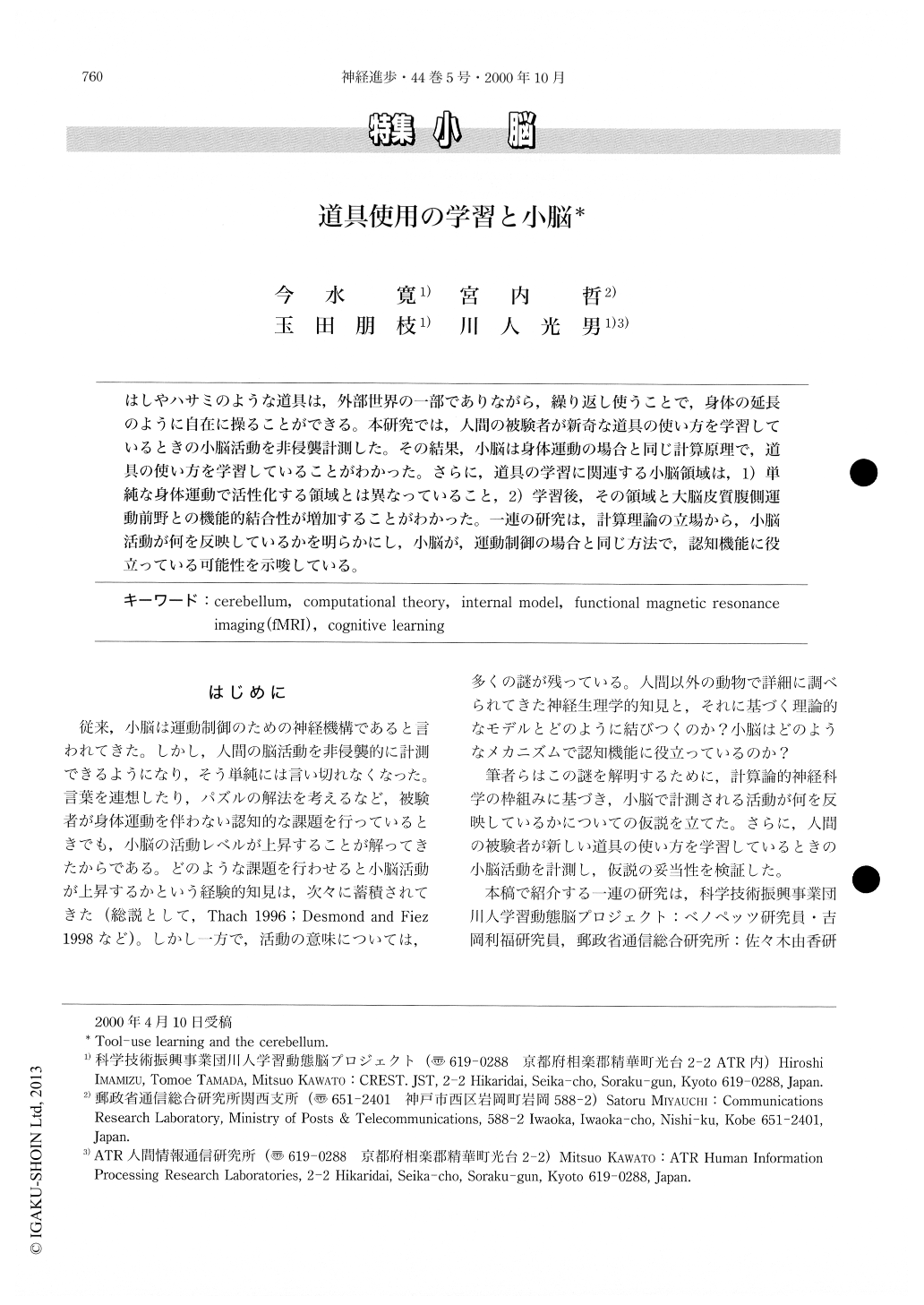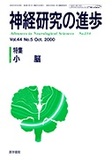Japanese
English
- 有料閲覧
- Abstract 文献概要
- 1ページ目 Look Inside
はしやハサミのような道具は,外部世界の一部でありながら,繰り返し使うことで,身体の延長のように自在に操ることができる。本研究では,人間の被験者が新奇な道具の使い方を学習しているときの小脳活動を非侵襲計測した。その結果,小脳は身体運動の場合と同じ計算原理で,道具の使い方を学習していることがわかった。さらに,道具の学習に関連する小脳領域は,1)単純な身体運動で活性化する領域とは異なっていること,2)学習後,その領域と大脳皮質腹側運動前野との機能的結合性が増加することがわかった。一連の研究は,計算理論の立場から,小脳活動が何を反映しているかを明らかにし,小脳が,運動制御の場合と同じ方法で,認知機能に役立っている可能性を示唆している。
A tool such as chopsticks or scissors is a part of the external world when not in use. However, it can be used as almost a part of the users'own body after long-term repeated use. In this study, we investigated cerebellar activity using a functional neuroimaging when human subjects learned how to use a novel tool. Results indicated that the cerebellum acquires internal models of the tool in the same computational principle that it acquires internal models of the musculoskeletal system. Furthermore, we found that 1) cerebellar regions related to the learning are different from those related to control of limb movements, and 2) functional connectivity between these regions and the ventral premotor area increased after the learning. A series of our studies revealed computational meanings of the cerebellar activity measured by the neuroimaging, and suggested that the cerebel-lum contributes to cognitive learning in the same way that it contributes to motor learning.

Copyright © 2000, Igaku-Shoin Ltd. All rights reserved.


